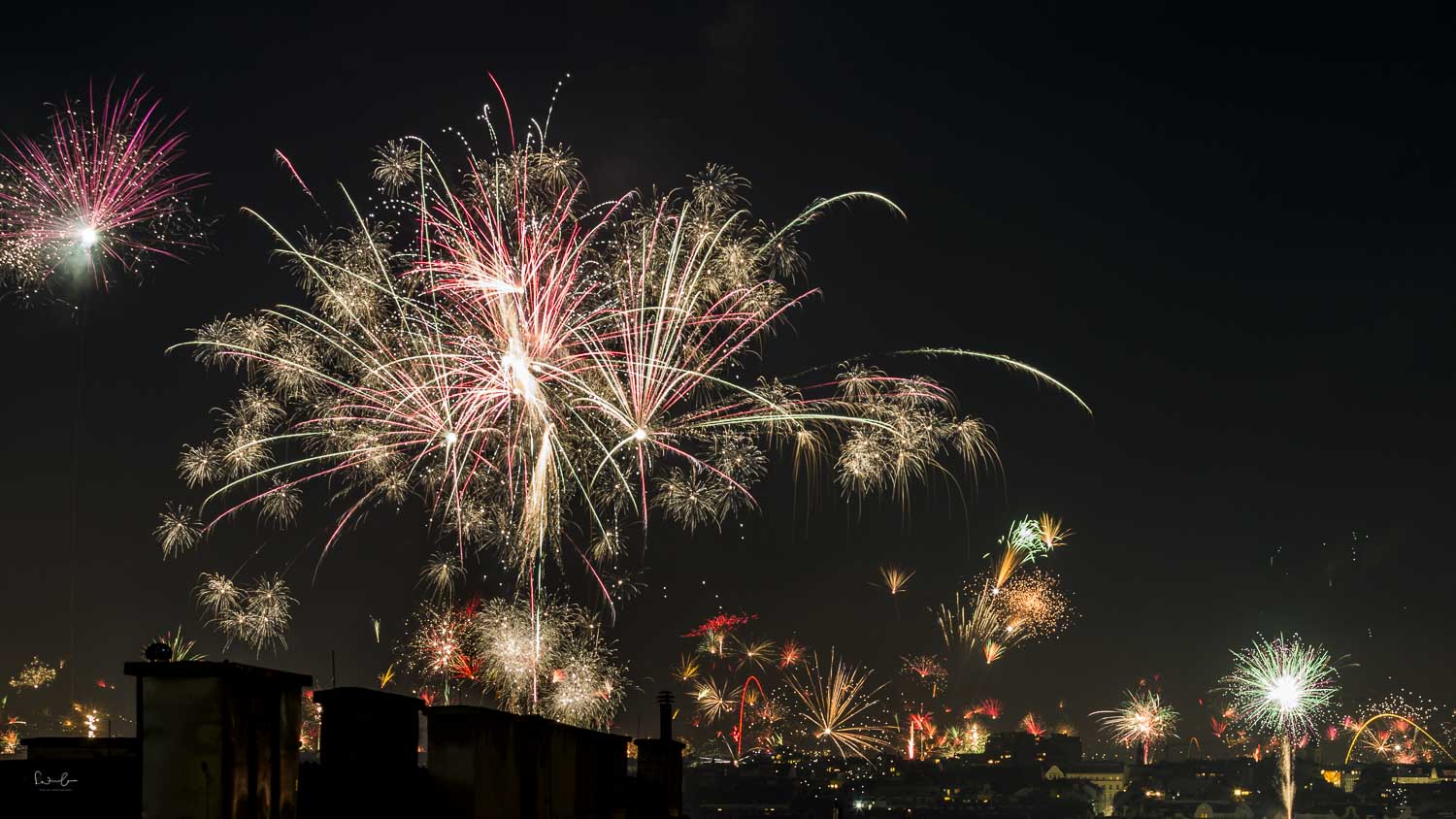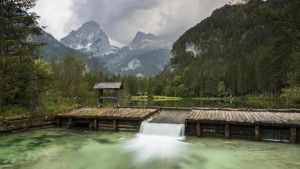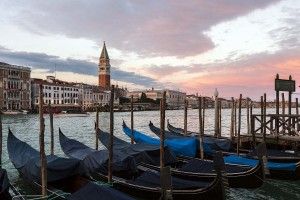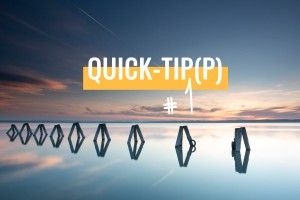Have you ever tried to photograph fireworks and it hasn’t quite worked out so well? No worries. With this tutorial, you will certainly shoot great New Year’s Eve fireworks photos.
The most important prop beside your camera is a stable tripod. One with separately movable legs is most suitable, so you can use it anywhere. You need a tripod because you have to shoot fireworks at long shutter speeds of at least three seconds. Long shutter speeds ensure that you have the light trails of exploding fireworks in your photo. With short shutter speed, you would only capture a few spots of light from the fireworks. As an alternative to a tripod, you can also choose a bean bag or a solid base. But then you are limited to the image section. A clear recommendation is therefore to use a solid tripod.
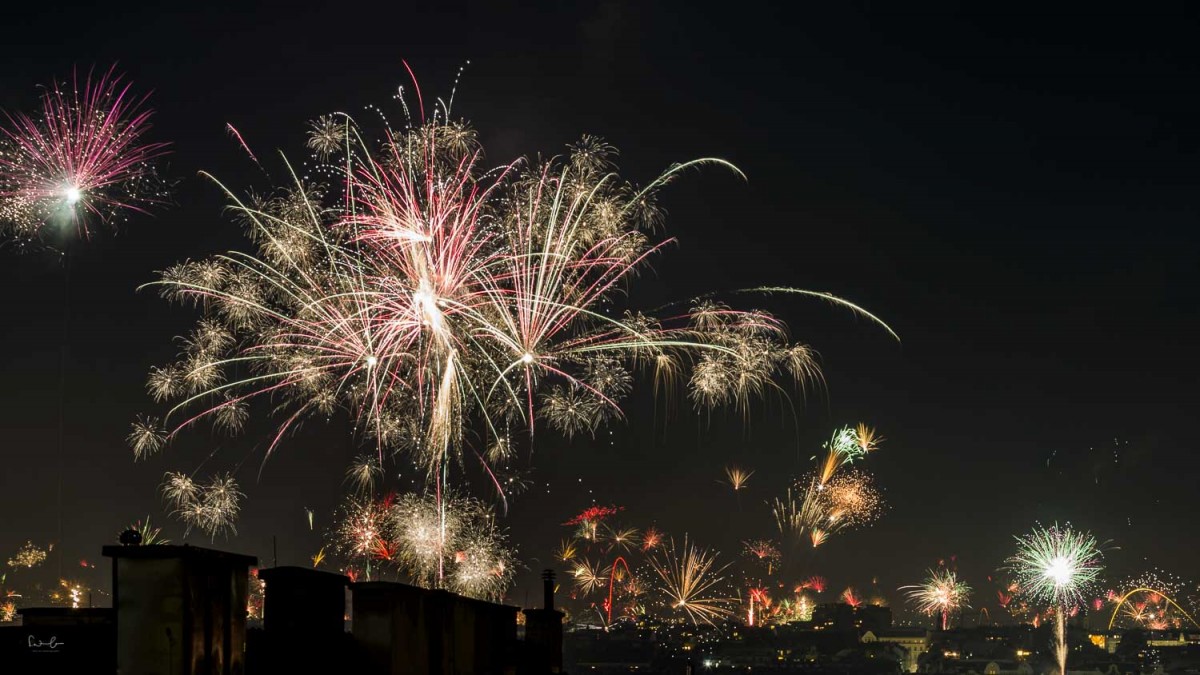
Camera settings
When exposing a fireworks photo, I recommend that you manually set the three exposure values aperture, shutter speed, and ISO. So use the manual mode (M). If you choose a semi-automatic mode, aperture or shutter priority, the camera is surely confused by the dark ambient light and the brightness of the fireworks. Therefore, shoot with manual mode. Anyone who has been to my photography classes knows that I recommend M mode for most photo situations anyway.
Start with the ISO. The ISO setting controls the light sensitivity. A high ISO value causes image noise and you don’t want that. So set the ISO to the lowest possible value your camera has (64, 100 or 200).
You can adjust the aperture to match the ambient light. An f/9 is a good aperture value for shooting fireworks. If you are in a place where there is a lot of light (e.g. street lights), set the aperture to f/13 for example. Be sure to take some test photos and check the exposure.
I already mentioned at the beginning that you need long exposure times to capture the light trails of the fireworks nicely. How long you set the shutter speed depends on your surroundings and the aperture. In any case, you need 3-10 seconds, mostly longer. After all, it takes several seconds for the fireworks to unfold their full glory.
Take test shots and adjust aperture and shutter speed accordingly. If the light trails become too bright, change the aperture setting to f/13. If the light trails are rather only light dots, increase the exposure time.
Choose the camera lens
The choice of the lens should be adjusted to the surroundings. With a zoom lens (200 mm) you capture the fireworks well and catch them close to you. If you want to get more from the background into the picture, for example, a mountain scenery, choose a wide-angle lens.
Use a remote shutter release
For sharp fireworks photos, you need a remote shutter release or at least the 2-second self-timer function of the camera. Why? Because when you press the shutter button, the camera shakes and blurs the photo. Turn off the Image Stabilizer as well, because it also causes slight shaking. And you shoot with a tripod, so you don’t need the stabilizer.
Focus correctly for sharp fireworks photos
Not only the remote shutter release but also the correct focusing ensures sharp fireworks photos. You won’t be happy with the autofocus because it won’t find anything to focus on.
So you have to focus manually. Switch focus to MF for manual focus. At the front of the lens, you’ll find the focus ring, which you turn in order to focus manually. Set it to infinity ∞. Many lenses don’t have a distance indicator. Then what? Then you first select the autofocus and place the autofocus point where the fireworks are fired from the ground. You focus on this spot thus making a substitute distance measurement at the same distance as the fireworks in the air. Then you switch back to manual focus. But it is important that you then do not adjust anything on the lens. If you don’t find a spot on the ground where you can focus, light up with a flashlight and focus on that spot.
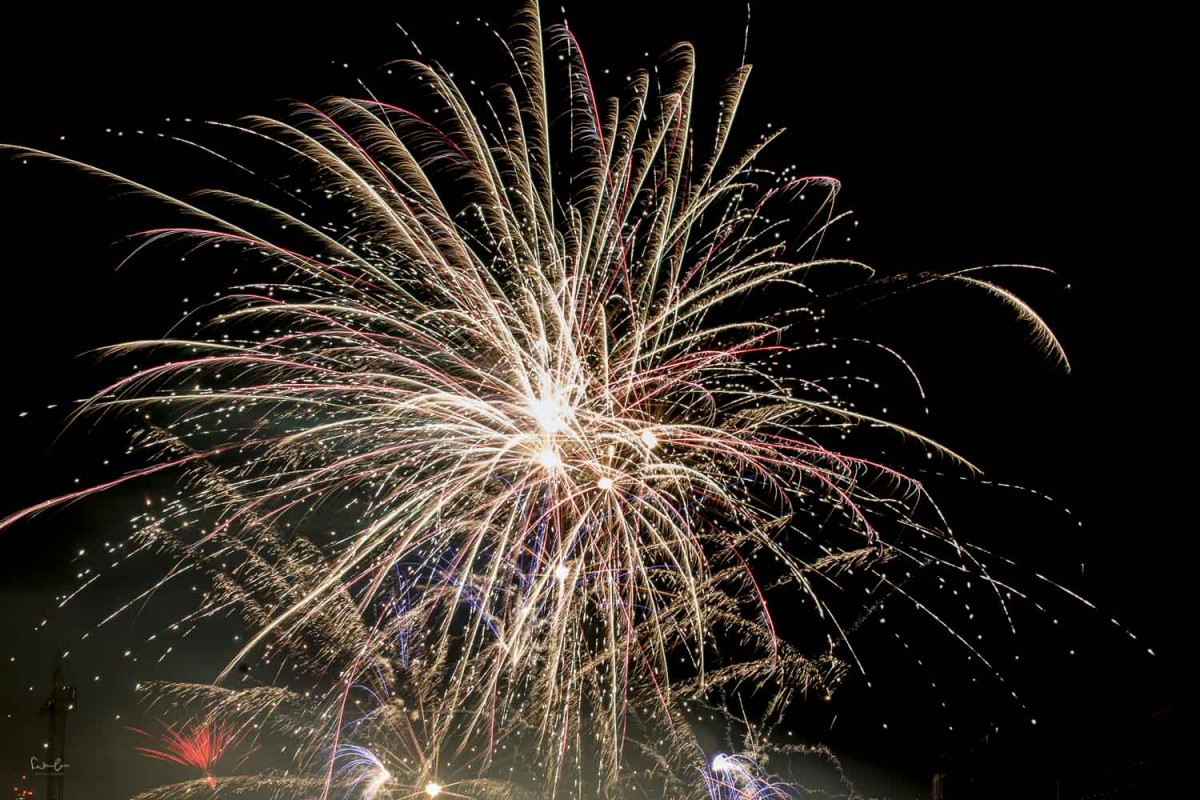
Select the color temperature
The next step is to select the correct color temperature. If you’re shooting in RAW format, you don’t have to worry about the white balance, because you can change it later in the image editing program with just one click. However, if you’re photographing in JPEG format, white balance is very important, because you want a photo without a yellow cast. Choose the white balance light bulb and check the photos to avoid color casts.
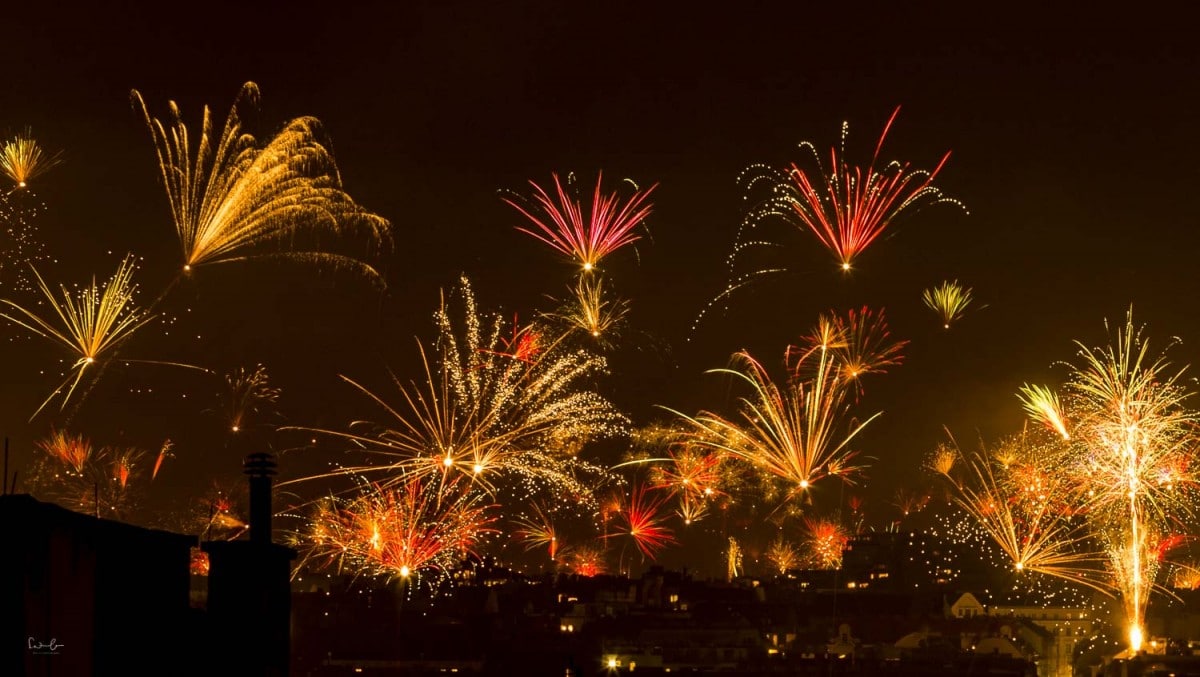
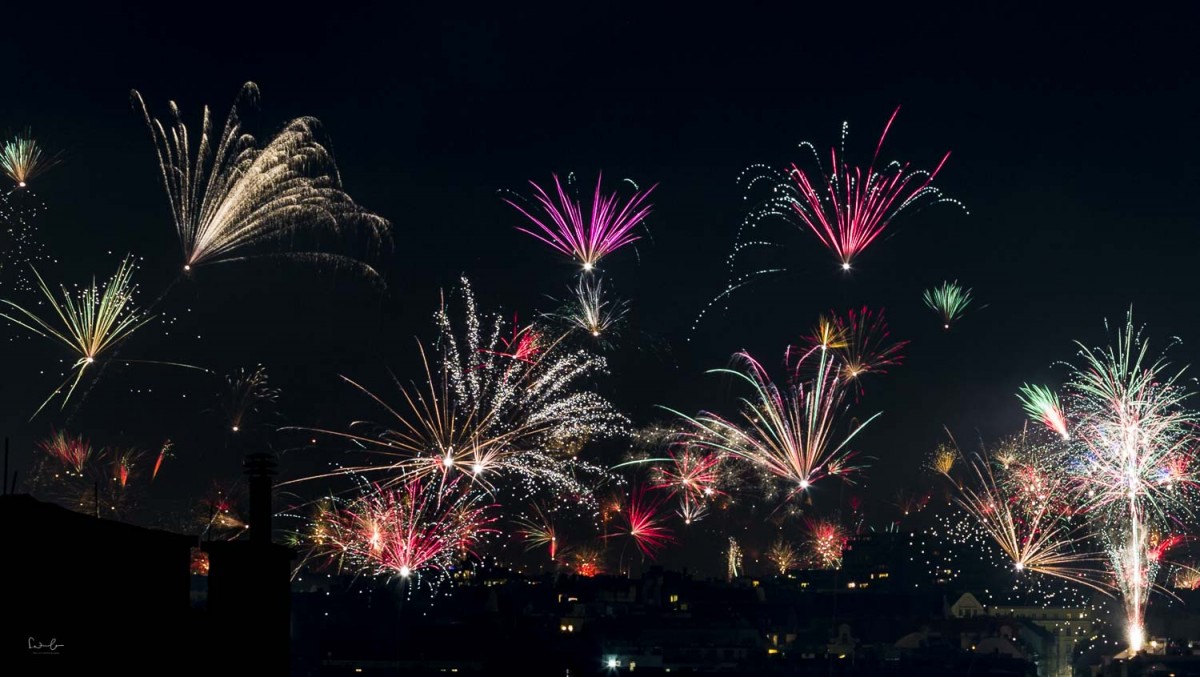
Step by step tutorial shooting a New Year's Eve fireworks
1. Choose a beautiful vantage point. A hill is perfect – in the city on a roof terrace or in the countryside on a hill or mountain. If you are near water, your fireworks photos will impress by their reflections. Depending on how much of the surroundings you want in the photo, you choose a zoom or wide-angle lens.
2. Place the camera on a solid tripod. If necessary, also weigh the tripod down with your camera backpack. Wind causes camera shake, so the tripod must be stable and able to handle some wind.
3. Choose the image composition
4. Deactivate the image stabilizer
5. Set the focus to manual and focus as described above.
6. Now select the settings on the camera:
… manual mode (M)
… white balance to artificial light
… an aperture between f/8 and f/11
… ISO 100
… exposure time to 10 seconds
Then take your first test shots and check the exposure. Depending on the exposure, you will have to adjust the aperture and / or shutter speed.
Another Pro Tip:
Take a black A5 size cardboard with you. Hold the cardboard in front of the lens during exposure when there are no lights in the sky. This will prevent the sky from being unnecessarily brightened and permanent lights such as street lamps will not be overexposed. Also, the cardboard helps if someone rides a bicycle or walks by with a lantern and the person is captured on your photo. But make sure that you don’t touch the camera or lens with the cardboard.
Good luck with your fireworks photos.

